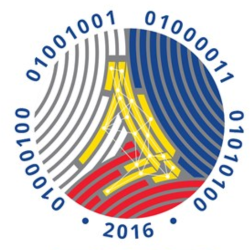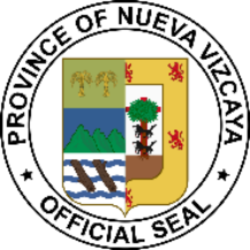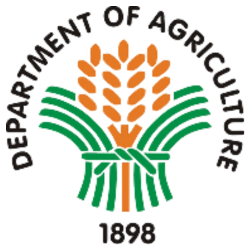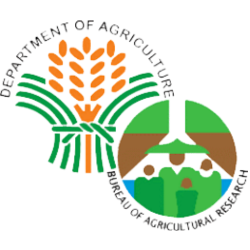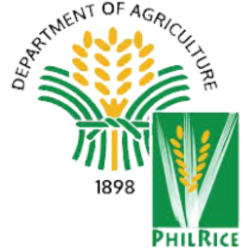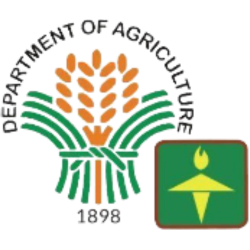Ground Acapulco (Cassia Alata) Seeds as Potential Dewormer for Native Chicken
The study determined the anthelmintic efficacy of different dosages of ground Acapulco seeds (GAS) against intestinal parasites of native chicken at the poultry project of the Nueva Vizcaya State University.
Twenty-five parasitized native chickens were distributed to five intervention groups with five birds per group following non-randomization procedures of a quasi-experiment. The intervention groups were Group 1 (IG1) – commercial dewormer (Albendazole, Positive Control); Group 2 (IG2) – non-medicated (Negative Control); Group 3 (IG3) – 10 g encapsulated GAS; Group 4 (IG4) – 20 g encapsulated GAS; Group 5 (IG5) – 30 g encapsulated GAS. Observations and data collection were done at 3, 6, 9 and 12 days post treatment.
Results revealed that ground Acapulco seeds were effective against Capillaria, Ascaridia and Tetrameres. Necropsy findings showed that 20 and 30 g encapsulated GAS were more effective than albendazole in eradicating adult parasites. Use of encapsulated GAS as anthelmintic for native chicken reduced deworming cost.
No new disease emerged during the conduct of study. All the diseases identified in Cagayan Valley were endemic or constantly occurring.
Keywords: ground acapulco seeds (GAS), parasitism
Citation (APA): Sapigao, K. M. A. & Espiritu, O. P. (2014). Ground acapulco (Cassia alata) seeds as potential dewormer for native chicken. NVSU Research Journal, 1(1), 5-13.
Benthic Macroinvertebrates as Indicators of Pollution in Mapalyao Stream of Nueva Vizcaya Using the Hilsenhoff Family-level Biotic Index
This is a fourth of a research series on Nueva Vizcaya’s freshwater quality employing benthic macroinvertebrates as bioindicators. The study determined the water quality of the Mapalyao Stream using macroinvertebrates as bioindicators and Hilsenhoff Family-Level Biotic Index as measurement of the indicators.
Two reaches (upstream, downstream) representing 2000 m of the stream were sampled. Sampling yielded 200 individuals representing 14 families and three orders/suborders. Collected taxa with highest sensitivity to pollution (lowest tolerance values) were Leuctridae (0), Rhyacophilidae (0), and Perlidae (1). Families with the highest tolerance values were Chironomidae (8), Caenidae (7), and Tabanidae (6). Chironomidae and Tabanidae were found at Reach 1 (upstream), particularly in stagnant, leech-infested pools. Collectively, Mapalyao Stream has a very good water condition, attributable to geomorphological characteristics of the stream.
Keywords: benthic macroinvertebrates, Hilsenhoff family-level biotic index
Citation (APA): Manuel, R. P. (2014). Benthic macroinvertebrates as indicators of pollution in Mapalyao stream of Nueva Vizcaya using the Hilsenhoff family-level biotic index. NVSU Research Journal, 1(1), 14-21.
Growth and Yield Response of Basmati 370 (Oryza Sativa L.) to Bio-n Under Existing Climatic Conditions in Nueva Vizcaya
The study investigated the growth and yield response of Basmati 370 to Bio-N under existing climatic conditions in Nueva Vizcaya.
The experiment was laid out in randomized complete block design (RCBD) with four replications. It was conducted during the wet season from September 2012-January 2013.
Results revealed that Bio-N application has no effect on growth parameters i.e. growth rate, plant height at harvest, number of tillers, length of panicles, spikelet sterility, and filled and unfilled grains. Moreover, the application of Bio-N also did not affect the number of days to maturity, panicle initiation, booting, and heading.
On the other hand, Bio-N application to Basmati 370 had improved significantly the yield parameters i.e., 1000 grain weight, and consequently, the yield per plot and computed yield per hectare. Computed yield was better by 44.13% for Bio-N treated grains.
In terms of the relationship between growth and weather elements as well as growth and solar radiation, the growth of Basmati 370 had significantly high positive correlation with temperature in both treatments. On the other hand, growth and relative humidity had a negative correlation in both treatments.
In Nueva Vizcaya therefore, the yield of Basmati 370 can be improved by the application of Bio-N.
Keywords: Basmati 370, Bio-N
Citation (APA): Celeste, W. O. M. & Dumale, W. A. (2014). Growth and yield response of Basmati 370 (Oryza Sativa L.) to Bio-N under existing climatic conditions in Nueva Vizcaya. NVSU Research Journal, 1(1), 22-33.
Predaceous Activity and Efficacy of Nematophagous Fungi (Arthrobotrys Oligospora) on the Larva of Common Housefly (Musca Domestica) in-vitro
The study determined the predaceous activity of different spore concentration of Arthrobotrys oligospora against larva of common housefly (Musca domestica), and the mode of action through microscopic examination at three (3) hours interval for 48 hours.
Synchronized reproduction of adult common housefly to produce similar stage of first larva instar was done. A total of 250 larvae were used in the study where 10 larvae were used for each treatment. There were five treatments; each treatment was replicated five times as follows: T1 - Malathion positive control), T2 - distilled water (negative control), T3 - 2000 spores of Nematophagous Fungi (NF), T4 - 4000 spores of NF, T5 - 6000 spores NF.
The study showed that nematophagous fungi at 4,000 and 6,000 spore levels were comparable to the commercially prepared larvicide (Malathion) in terms of its effects on percentage mortality starting 36 hours until 48 hours exposure. It was effective as biological control based on its the ability to trap and kill the larvae of the common housefly.
Keywords: predaceous activity, Musca domestica, Arthrobotrys oligospora
Citation (APA): Calub, N. P., Torres, L. G., & Yago, J. I. (2014). Predaceous activity and efficacy of Nematophagous fungi (Arthrobotrys oligospora) on the larva of common housefly (Musca domestica) in-vitro. NVSU Research Journal, 1(1), 34-39.
Gross and Histopathological Evaluation of the Hepatoprotective and Nephroprotective Properties of Native Guava (Psidium Guajava Linn. Var. Native Guava) Leaf Extract on Ccl4-fed White Mice (Mus Musculus)
The Native Guava (Psidium guajava Linn. var. native guava) Leaf Extract was evaluated for its hepatoprotective and nephroprotectiveproperties after induction of acute liver and kidney damage in laboratory mice using carbon tetrachloride (CCl4). The mice were orally administeredwith 1ml/200g body weight 3% CCl4mixed in corn oil and after 24 hours, the mice were sacrificed, and the liver and kidney were harvested for gross and histopathologic evaluation.
It was found that oral supplementation of native guava leaf extract (NGLE) at a concentration of 200mg/kg body weight prevented enlargement of both liver and kidney. Evaluation of macroscopic or gross lesions in both organs showed marginal or minimal presence of lesions. Histopathological evaluation of liver and kidney showed fewer numbers of observed cellular lesions with lesser degree and extent of tissue damage when compared with animals that did not receive any NGLE supplementation. This study was able to show that NGLE has hepatoprotective and nephroprotective properties and can be used to prevent kidney and liver damage.
Keywords: Nephroprotective, Hepatoprotective, Histopathological, Macroscopic, Native guava leaf extract (NGLE)
Citation (APA): Hombrobueno, R. A. & Morillo, V. A. (2014). Gross and histopathological evaluation of the hepatoprotective and Nephroprotective properties of native guava (Psidium guajava Linn. var. native guava) leaf extract on CCL4-fed white mice (Mus musculus). NVSU Research Journal, 1(1), 40-47.
Development of Component Technology for High Yield and Quality Stevia (Stevia Rebaudiana Bertoni)
Two experiments conducted at the experimental field station of the Nueva Vizcaya State University from August 2013 to December 2013 aimed to develop a technology in the production of Stevia propagules using different stem cuttings and planted in different substrates. Field performance in terms of growth, yield, percent survival and quality were also studied. The first experiment was laid in 2 x 4 factorial in Completely Randomized Design (CRD) with three replications and the second experiment was laid in a 4 x 3 factorial in Randomized Complete Block Design (RCBD).
Based on the results of the study, the best substrate for stevia propagule production is 1:1 carbonized rice hull and garden soil. Economic and biological yield is best attained in the application of inorganic fertilizer (14-14-14, 46-0-0) or processed chicken manure (PCM). Sweeter taste is attained when the plant is applied with fertilizer inputs. Greener color is attained at planting distance of 30 cm x 20 cm.
Keywords: Stevia, organic fertilizer
Citation (APA): Baral, M. R. O. & Salas, M. C. I. (2014). Development of component technology for high yield and quality stevia (Stevia rebaudiana Bertoni). NVSU Research Journal, 1(1), 48-60.
Point to Surface Mapping of Selected Soil Properties Using Different Interpolation Techniques
Three spatial analysis algorithms namely: inverse distance weighted (IDW), kriging, and spline, were used to interpolate soil pH and soil texture properties from sample point data. A random-point sampling was carried out to collect soil samples. Samples were analyzed in the laboratory.
Interpolation was carried out in ArcGIS 10. Root mean square error (RMSE) was calculated to evaluate the relative precision of the interpolation methods. IDW had the lowest RMSE for pH, OM, clay, and sand while kriging had the lowest RSME in silt. Spline had the highest RMSE for all of the four properties. Lower RMSE implies better interpolation result.
While the relative precision results appeared to be consistent, the analysis of variance revealed that the three interpolation methods were not significantly different (p>0.05) from each other. In addition, the soil map generated through kriging had the least visual appeal among the three methods.
The major outputs of the interpolation are surface maps (continuous data) of the five soil attributes. Surface maps are important material for decision making regarding land use, soil-plant compatibility, yield analysis, and soil improvement activities. Future research should take into account the topographic factors, existing vegetation and other important site properties.
Keywords: soil interpolation method, soil mapping, IDW, kriging, splinet
Citation (APA): Vallesteros, S. F., Galang, M. A., & Vallesteros, A. P. (2014). Point to surface mapping of selected soil properties using different interpolation techniques. NVSU Research Journal, 1(1), 61-71.
Performance of Broilers Fed Ganoderma (Ganoderma Lucidum) Mycelia Meal Treated With Chitinase in the Diet
This study was conducted for a feeding period of 35 days to explore the potential of ganoderma mycelia as an alternative feed source for broilers. One hundred twenty straight-run, day-old broiler chicks were randomly distributed to two treatments. The performance of broilers fed ganoderma mycelia meal with and without chitinase in the diet and its profitability was determined. Average final and gain in weights, feed conversion ratio and growth rate of broilers fed Diet 2 was statistically better than those fed Diet 1. No variations were observed in the average initial weight and feed consumption. Statistically better dressing percentage with and without giblets and weight of giblets in broilers fed Diet 1 when compared with those in Diet 2. Higher cost of feed per kg gain in weight was noted in broilers fed Diet 1 but these elicited higher returns due to higher average gain in weight and final weight. The result suggests that ganoderma mycelia can improve the performance of broilers and increase profitability.
Keywords: broiler, ganoderma, growth performance, mycelia, profitability
Citation (APA): Ba-to, C. C. & Umaguing, B. S. (2014). Performance of broilers fed ganoderma (Ganoderma lucidum) mycelia meal treated with chitinase in the diet. NVSU Research Journal, 1(1), 72-78.



















